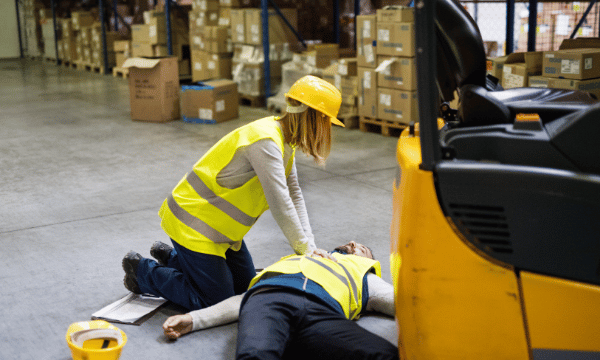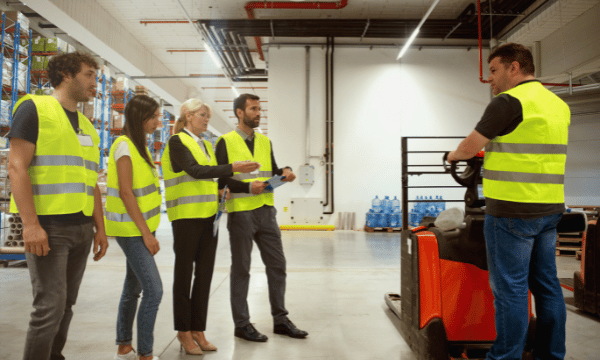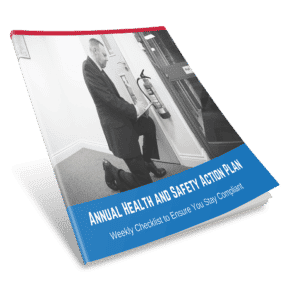How To Prevent Workplace Transport Accidents?
We are often asked, “How to prevent workplace transport accidents?” In this article, we cover how managers, operators and safety representatives can all play a part in reducing these accident statistics by managing workplace transport safety.
Workplace transport is regarded as any activity involving vehicles in the workplace or vehicles loading or unloading on a public road adjacent to a workplace.
Chilling Government statistics show that every year there are over 5,000 accidents involving transport within the workplace resulting in around 50 deaths. Of those reported to involve vehicles, the majority include people being struck, crushed or falling from them.

You Must Provide a Safe Site
The best way to reduce the risk of accidents between pedestrians and vehicles is by segregation. This can be by way of a physical barrier, which is the most effective method or by painted road markings. Make sure that everyone in the workplace is aware that the routes are separate by training and inductions. It is especially important to segregate at pinch points, such as blind bends, narrow openings and access into buildings.
Reversing causes a lot of accidents, so try to arrange traffic routes so they are one way. Failing that provide turning circles or reversing bays so vehicles must reverse in a designated area.
Other control measures include good visibility, lighting, the enforcement of sensible speed limits, well-positioned signs, signals and markings and training.
The transport activities within the site, such as vehicle movements, should be free from obstructions, offer suitable parking, signalling, loading, reversing, coupling and tipping and have effective control measures.
Employers have a duty under health and safety to protect employees, contractors and the public whilst on site.
You Must Provide Safe Vehicles
Workplace vehicles should be suitable for the purpose and appropriate for the job in hand and operators. For example, gas or battery-powered forklift trucks are suitable for use in warehouses or flat forecourts, but would not be suitable for use on a construction site.
Reversing is a high-risk activity, so vehicles should be fitted with reversing lights or audible alarms. Many vehicles also have to reverse cameras now so that drivers can see in blind spots. Other warning devices, i.e. flashing beacons, are often fitted to enhance visibility for pedestrians. The driver should also be able to see clearly around the vehicle or in the case of restricted visibility use mirrors or cameras.
A planned preventative maintenance regime is imperative. This should include planned inspections, daily checks and routine maintenance. Staff must be trained to carry out daily checks and a suitable competent mechanic should service and maintain vehicles.

Your Staff Must Be Trained
Drivers should be suitably trained to a competent level, with special attention given to new recruits and younger drivers. Remember that training does not necessarily lead to competence straight away. Drivers may need exposure to many different situations before they can be classed as truly competent, so take care when allocating duties and ensure that newer drivers have adequate supervision. Monitoring and refresher training ensures continued competence. Consult employees on all health and safety issues.
What the Law Says
Workplace transport is covered by the Provision and Use of Work Equipment Regulations 1998. It says that equipment must be:
- suitable for the intended use
- safe for use, maintained in a safe condition and inspected to ensure it is correctly installed and does not subsequently deteriorate
- used only by people who have received adequate information, instruction and training
- used in accordance with specific requirements
If you have a question or enquiry about health and safety, please call the team on 01452 502113 or complete our enquiry form.
Find this helpful?
Signup to our email notifications to receive alerts when we publish new blogs. We promise not to spam your inbox, you will just get a short snappy intro to Health and Safety articles we think you will love.
"*" indicates required fields

Annual Health and Safety Action Plan
If you’ve got a question or query, please contact our super friendly team, they will be delighted to help you!
Simply get in touch via phone or email.

Free
Resources &
Downloads
Informative. Useful. Practical.
Here at Envesca we believe that we are good at giving proactive, sensible and useful advice. Below you will find some free resources that you can download on a host of subjects that will help you and your business.
Training Available
Envesca offer a number of different training courses, which offer advice and guidance on these topics.






